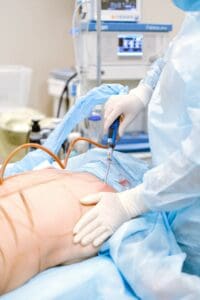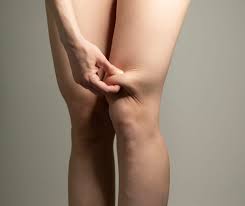Why Liposuction is Not a Weight Loss Solution, But a Body Contouring Tool
Liposuction, a type of lipolysis procedure, is often misunderstood as a quick fix for fat reduction and weight loss, despite being one of the cosmetic surgeries targeting subcutaneous fat. Many people think it’s a magic solution, a weight loss option, to shed pounds through legitimate weight loss methods like fat loss treatments and other weight loss treatments. However, the reality is different. Liposuction is primarily a body contouring tool for resistant fat, not a weight loss method. It helps remove stubborn fat pockets that resist diet and exercise, making it an effective weight loss treatment for suitable liposuction candidates.
Historically, liposuction emerged in the 1970s for fat loss, evolving into a popular cosmetic procedure for resistant fat. While it can enhance body shape and assist with fat loss, it’s not designed for significant weight reduction like lipo surgery, especially for resistant fat. Understanding this distinction is crucial for anyone considering lipo surgery and fat loss, especially when dealing with resistant fat. Knowing why liposuction isn’t a weight loss solution for resistant fat can lead to better expectations and results.
Key Takeaways
-
Liposuction is primarily a body contouring tool for resistant fat, not a method for weight loss; it should not replace healthy habits like diet and exercise.
-
Understanding the difference between liposuction and weight loss, especially regarding resistant fat, can help set realistic expectations for those considering the procedure.
-
Always consult with a qualified plastic surgeon to discuss your goals and determine if liposuction is the right choice for you.
-
Recognize the potential health risks associated with liposuction, and ensure you are fully informed before proceeding with the surgery.
-
After liposuction, maintaining a healthy lifestyle is crucial to achieve lasting results and prevent weight gain.
-
The true purpose of liposuction is to improve body shape, targeting stubborn fat areas that do not respond to diet or exercise.
Understanding Liposuction vs Weight Loss
Misunderstanding Liposuction
Liposuction is often seen as a quick weight loss solution. Many people believe lipo surgery can help them shed pounds rapidly. This misunderstanding leads to unrealistic expectations. Patients may think they can eat poorly and rely solely on lipo surgery for fat loss. However, liposuction is not designed for that purpose.
Liposuction removes localized fat deposits. It does not produce significant weight reduction. The American Society of Plastic Surgeons states that the average amount of fat removed in liposuction is about 5 to 10 pounds. This amount is minimal compared to overall body weight.
Root Causes of Weight Gain
Liposuction does not address the root causes of weight gain. Factors like poor diet, lack of exercise, and lipo surgery play major roles in obesity. Without changing these lipo habits, patients may struggle with maintaining results. After undergoing liposuction, individuals may revert to old eating patterns. This can lead to regaining lost fat from lipo or even gaining more weight.
Normal weight loss requires a balanced approach. Healthy eating and regular physical activity are essential for long-term success. Relying solely on liposuction ignores these important factors.
Weight Regain Risks
Individuals who use liposuction as a weight loss tool face risks of weight regain. Studies show that many patients experience fluctuations in their weight after the lipo procedure, highlighting liposuction risks. The National Institutes of Health found that some people regain most of the weight within five years after lipo.
This phenomenon occurs because liposuction does not change how the body stores fat. Fat cells removed during lipo surgery do not grow back, but remaining cells can expand with weight gain. This means that even after liposuction, a person can still gain weight if they do not maintain a healthy lifestyle.
How Liposuction Works
Definition
Liposuction is a cosmetic procedure. It targets specific areas of the body to remove unwanted fat, lipo. This process does not serve as a weight loss solution, lipo. Instead, it focuses on body contouring.
Lipo Procedure
During the lipo procedure, surgeons use suction to remove fat cells. They insert a thin tube called a lipo cannula into the skin. This lipo tube connects to a vacuum that pulls out fat. Surgeons can use different techniques, such as tumescent liposuction. This lipo method involves injecting a solution into the fatty area first. The solution helps numb the area and reduces bleeding.
Fat Cells Removal
The removal of fat cells happens in specific locations. Common areas include the abdomen, thighs, arms, and neck. Skilled liposuction providers assess each patient individually. They determine which areas require sculpting, such as lipo, based on personal goals.
Sculpting Areas
Liposuction helps create a more defined shape for the body. For example, it can slim down love handles or enhance the contours of the thighs. This technique allows patients to achieve their desired look without significant weight loss.
Lipolysis Procedures
Liposuction is one type of lipolysis procedure. Other methods may include non-invasive options like CoolSculpting or laser treatments. These alternatives also target fat but do not involve surgery.
Post-Procedure Care
After the lipo surgery, patients need to follow specific care instructions. This includes wearing compression garments to reduce swelling. Recovery times vary but often take several weeks for optimal results.
Results
Results from liposuction are visible after swelling decreases. Many people notice a more toned appearance in treated areas. However, maintaining a healthy lifestyle is essential for lasting results.
Health Risks of Liposuction
Complications Overview
Liposuction carries various health risks. Many liposuction patients experience complications during or after the procedure. Common issues include fat clots, blood clots, and toxic reactions to anesthesia. These complications can lead to severe health problems.
Fat clots can block blood vessels, causing serious conditions like pulmonary embolism. This occurs when a clot travels to the lungs. Blood clots can also form in the legs, leading to deep vein thrombosis. These events are life-threatening and require immediate medical attention.
Increased Surgical Risks
The amount of fat removed impacts surgical safety. Higher amounts of fat increase the liposuction risks and the risk of complications for lipo patients. Surgeons typically recommend limiting fat removal to about five liters in one session. Removing more than this can elevate the chance of serious issues.
Obese individuals face additional challenges. They often have higher lipid contents in their bodies, which complicates the surgery. The presence of visceral fat makes it harder for surgeons to perform the procedure safely. Obesity can also lead to longer recovery times and increased chances of infection.
Suitability of Candidates
Not every person is a suitable liposuction candidate. Doctors evaluate each patient’s health before proceeding with surgery. Ideal candidates are close to their target weight and have localized fat deposits that do not respond to diet or exercise.
Patients with significant amounts of resistant fat may find liposuction less effective as a solution for weight loss. Instead, they should focus on lifestyle changes first. This includes diet and exercise programs tailored to reduce belly fat and improve overall health.
Post-Operative Concerns
After surgery, patients need proper care to avoid complications. Following post-operative instructions is crucial for recovery. Infections can occur if wounds are not kept clean. Patients must monitor their bodies for any unusual symptoms.
Swelling and bruising are common after liposuction but should gradually decrease over time. If swelling persists or worsens, it’s important to consult a doctor immediately. They can assess whether there are underlying issues that need attention.

Why Liposuction is Not for Weight Loss
BMI Limitations
Liposuction is not recommended for individuals with a Body Mass Index (BMI) of 39 or higher. A high BMI indicates obesity, which presents various health risks. For those in this category, traditional weight loss methods are more effective. These methods include diet and exercise. They help reduce overall body fat, leading to a healthier lifestyle.
Not for Significant Weight Loss
Liposuction is not suitable for significant weight loss. It targets stubborn fat deposits that resist diet and exercise. This procedure removes fat from specific areas, but it does not address the entire body. For obese individuals, relying on liposuction can lead to disappointment. The procedure cannot replace a balanced approach to weight management.
Maximum Weight Loss
The maximum weight loss achievable through liposuction is around 8-10 pounds. This amount may seem small compared to what many expect. Individuals often hope for larger reductions in their body weight. However, liposuction focuses on contouring rather than large-scale weight loss. Those seeking greater results should consider other options.
Health Risks
Health risks associated with liposuction further clarify its limitations. Complications can arise during or after the procedure. These can include infection, blood clots, and fluid accumulation. Such risks are heightened for those with a high BMI or existing health conditions. Therefore, medical professionals usually advise against the surgery for significantly overweight patients.
Alternative Solutions
For effective weight management, alternative solutions exist. Diet and exercise remain the most reliable methods for losing weight. Many people find success through structured programs that include nutritional guidance and physical activity plans. Consulting with healthcare providers can also help identify personalized approaches to achieve weight loss goals.
Realistic Expectations
Understanding realistic expectations is crucial before undergoing liposuction. Patients often assume they will lose a considerable amount of weight after the procedure. Instead, they should focus on how it will enhance their body shape rather than serving as a primary method for weight reduction.
The True Purpose of Liposuction
Body Contouring
Liposuction is not primarily a weight loss procedure. It serves as a body contouring tool designed to reshape specific areas of the body. This technique focuses on removing fat deposits that are resistant to diet and exercise. Many people struggle with stubborn fat, even when they maintain a healthy lifestyle.
Target Areas
Surgeons often target areas like the abdomen, thighs, and arms during liposuction. These regions can hold onto subcutaneous fat despite efforts to lose weight. This type of fat lies just beneath the skin and can be hard to eliminate through traditional methods. Liposuction effectively removes this fat, leading to a more defined appearance.
Minimal Weight Loss
Patients may expect significant weight loss from liposuction, but this is misleading. The procedure typically removes only small volumes of fat. On average, surgeons remove about 5 to 10 pounds per session. This amount may not lead to noticeable changes on the scale for many individuals. Instead, liposuction enhances body shape rather than drastically altering weight.
Ideal Candidates
Ideal liposuction candidates are those close to their target weight but have specific areas of fat that bother them. These individuals should be in good health and have realistic expectations about the results. They often want to improve their overall appearance without losing large amounts of weight.
Long-Term Results
While liposuction can lead to a slimmer look in treated areas, maintaining these results requires commitment. Patients must continue exercising and eating healthily after the procedure. Without these habits, remaining fat cells can grow larger over time. Liposuction does not prevent future weight gain or address overall body weight.
Psychological Impact
The psychological effects of liposuction can also be significant. Many patients report increased self-esteem after seeing their new shape. However, it’s important for them to understand that this procedure does not solve underlying body image issues or guarantee satisfaction with one’s appearance.
Benefits of Body Contouring
Enhanced Appearance
Body contouring can significantly enhance physical appearance. It targets specific body areas where fat tends to accumulate. These areas include the abdomen, thighs, and arms. By removing excess fat, patients can achieve a more sculpted look. This change often leads to improved self-confidence. Many individuals feel more comfortable in their skin after the procedure.
A more defined silhouette can make a big difference in how one perceives themselves. Those who undergo body contouring often report feeling happier and more confident in social situations. They may also be more likely to participate in activities they once avoided due to body image concerns.
Proportionate Shape
Body contouring helps create a more proportionate and aesthetically pleasing body shape. It allows for targeted fat removal that traditional weight loss methods cannot achieve. While diet and exercise reduce overall body fat, they may not effectively address stubborn pockets of fat. Liposuction provides an option for reshaping the body by focusing on these areas.
For example, someone might lose weight but still have love handles or a bulging belly. Liposuction can remove these problem spots, leading to a balanced appearance. A well-contoured body can improve one’s overall proportions. This transformation can lead to increased satisfaction with one’s appearance.
Improved Fit of Clothing
Targeted fat removal can also enhance how clothing fits. Many people struggle with finding clothes that flatter their shape. After body contouring, individuals often notice that their clothes fit better. They may find it easier to shop for outfits that highlight their new curves.
Improved symmetry is another benefit of this procedure. Clothes tend to hang better on a body that has been contoured. The result is a polished look that boosts self-esteem. Feeling good in one’s clothing can have a positive impact on daily life.
Body contouring is not about losing weight but rather about refining the body’s shape. It serves as a complement to healthy lifestyle choices like diet and exercise. Individuals should understand that maintaining results requires ongoing effort in fitness and nutrition.
Importance of a Healthy Lifestyle Post-Liposuction
Diet Changes
Maintaining a healthy lifestyle is crucial after liposuction. A balanced diet supports recovery and helps sustain results. Patients should focus on nutrient-rich foods. Lean proteins, whole grains, fruits, and vegetables are essential. These foods aid healing and provide energy. Avoiding processed foods and sugary drinks is also important. Such items can lead to weight gain, negating the benefits of fat reduction treatment.
A well-planned diet can enhance body contouring outcomes. Eating smaller portions helps manage caloric intake. Drinking plenty of water keeps the body hydrated. This aids digestion and promotes skin elasticity. Many patients find meal prepping helpful. Planning meals in advance makes it easier to stick to healthy choices.
Regular Exercise
Regular exercise plays a significant role in post-liposuction success. Engaging in physical activity boosts metabolism and aids fat loss. It also strengthens muscles, improving overall body shape. Starting with light activities like walking or stretching is advisable during recovery. Gradually increasing intensity can lead to better results.
Incorporating both cardio and strength training is beneficial. Cardio exercises burn calories effectively. Strength training builds muscle, which increases resting metabolic rate. This means the body burns more calories at rest. Aim for at least 150 minutes of moderate exercise each week.
Sustaining Results
Improved lifestyle habits help sustain liposuction results long-term. Without these changes, patients risk regaining fat in treated areas. Adopting a healthier lifestyle can lead to further weight loss as well. Many individuals discover new motivation after their procedure.
Making small adjustments can have lasting effects. Setting realistic goals helps maintain focus on health improvements. Tracking progress through journals or apps encourages accountability. Celebrating milestones keeps motivation high.
Overall Health Improvement
Lifestyle changes post-liposuction contribute to overall health improvement. Patients often report increased energy levels and better mood from regular exercise and a balanced diet. These positive changes extend beyond physical appearance.
Many studies show that maintaining a healthy weight reduces the risk of chronic diseases. Conditions such as diabetes, heart disease, and hypertension are less likely with a healthy lifestyle.
Consulting with a Qualified Plastic Surgeon
Importance of Expertise
Patients should seek advice from qualified plastic surgeons before considering liposuction. These professionals have the training and experience needed to assess individual needs. They understand that liposuction is not a weight loss solution but a body contouring tool.
Surgeons can evaluate whether liposuction is appropriate for specific areas of the body. They look at factors such as skin elasticity, overall health, and fat distribution. A thorough evaluation helps in determining if this cosmetic procedure aligns with patient goals.
Personalized Recommendations
Plastic surgeons provide personalized recommendations based on each patient’s unique situation. They can discuss alternative weight loss options if liposuction is unsuitable. For some people, lifestyle changes like diet and exercise may be more effective. These changes can lead to long-lasting results.
Surgeons often suggest combining liposuction with other treatments for better outcomes. This approach can enhance body shape while addressing underlying health issues. Patients benefit from having a comprehensive plan tailored to their needs.
Medical Evaluation Process
A thorough medical evaluation is essential before undergoing liposuction. Surgeons assess medical history, current medications, and any existing health conditions. This evaluation identifies potential risks associated with the surgery.
Surgeons may also recommend lab tests or imaging studies. These steps ensure that patients are fit for surgery and can handle anesthesia safely. Understanding the patient’s overall health helps in planning the procedure effectively.
Understanding Limitations
Patients need to understand the limitations of liposuction. It targets isolated spots of fat but does not replace a healthy lifestyle. Surgeons emphasize that it is not a cure for obesity or an alternative to exercise.
People often expect dramatic results without maintaining healthy habits afterward. Liposuction reshapes the physique but does not prevent future weight gain if unhealthy habits continue. Therefore, consulting with a surgeon about realistic expectations is crucial.
Building Trust
Building trust with a plastic surgeon is vital for successful outcomes. Open communication allows patients to voice concerns and ask questions. Surgeons should explain every step of the process clearly.
Trust fosters a better relationship between patients and surgeons. This relationship leads to improved satisfaction with results after surgery. Patients who feel informed are more likely to adhere to post-operative care instructions.
Closing Thoughts
Liposuction isn’t a magic fix for weight loss. It’s a tool for body contouring, ideal for those close to their goal weight. Understanding this distinction is crucial. You need to prioritize a healthy lifestyle before and after the procedure. This ensures you get the most from your investment in your body.
Consulting with a qualified plastic surgeon can guide you on this journey. They’ll help you set realistic expectations and tailor the approach to your needs. Remember, liposuction works best alongside a balanced diet and regular exercise. So, if you’re considering this option, focus on overall wellness first. Take the leap towards a healthier you today!
Frequently Asked Questions
Why is liposuction not considered a weight loss solution?
Liposuction is designed for body contouring, not significant weight loss. It removes stubborn fat deposits but does not address overall body weight or health.
How does liposuction work?
Liposuction uses suction techniques to remove fat from targeted areas of the body. It reshapes and sculpts, providing a more defined silhouette.
What are the health risks associated with liposuction?
Health risks include infection, scarring, fluid accumulation, and anesthesia complications. It’s crucial to consult with a qualified surgeon to understand these risks fully.
What is the true purpose of liposuction?
The primary purpose of liposuction is to enhance body contours by removing localized fat deposits. It helps create a more balanced and aesthetically pleasing figure.
What benefits does body contouring provide?
Body contouring improves self-esteem and confidence by sculpting the body. It can also enhance physical appearance, making clothes fit better.
Why is a healthy lifestyle important after liposuction?
Maintaining a healthy lifestyle post-liposuction ensures long-lasting results. It helps prevent new fat accumulation and promotes overall well-being.
How can I find a qualified plastic surgeon for liposuction?
Look for board-certified plastic surgeons with experience in liposuction. Check their credentials, read reviews, and schedule consultations to discuss your goals and concerns.






